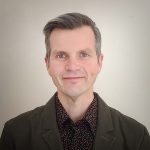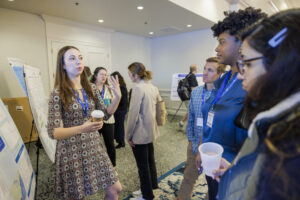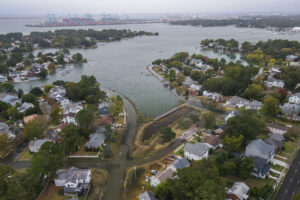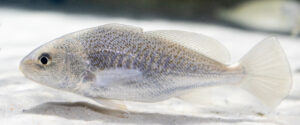A “place” for science: Setting the scene for science communication
Communication isn’t just about how we say things, but where we say them. “Place” matters in science communication and outreach—whether that means meeting a fisherman on the docks, or meeting with community members in a local church. Physical spaces speak volumes, even though setting is often brushed aside as a mere backdrop for the conversation.
Social scientists aren’t the only ones thinking about the importance of place. In theater, the background scenery is often the first thing the audience sees. Theater scenographers carefully design and build the set for a play. At their core, scenic design and science communication aren’t that different—location plays a critical role in setting a tone and conveying a message.
Virginia Sea Grant has always been interested in making connections like this, which is why we invited Matthew Allar, William & Mary’s award-winning scenic designer, to be the keynote speaker at our upcoming Graduate Symposium in February 2020. When I first met Matt in the scene design shop, he was covered in paint, surrounded by design pieces and scenery. I know he’ll bring that same hands-on, dynamic approach to our Symposium when he discusses the connections between science and scene design.

Like a successful theater production, science collaboration requires many moving parts to come together at once. In the same way a costume designer, choreographer, and scene designer all focus on different components of the same theater production, scientists, engineers, and landscape architects all approach sea level rise from very different perspectives. In both cases, novel outcomes and breakthroughs—whether that’s a theater production or a research proposal—benefit from integrating these different perspectives. We can learn from each other about how to do better teamwork and communicate our work more effectively.
This isn’t the first time Virginia Sea Grant’s Symposium has taken an outside-of-the-box approach to science communication and collaboration. VASG is always interested in making new connections and sparking new ideas, and our Symposium brings together a diverse group of coastal professionals. Past keynote speakers have highlighted creative dimensions within science communication, from a historian who studied 1776 hurricanes to a science communicator who uses improv to connect with her audience and build empathy.
We hope you join us at the 2020 Symposium to hear Matthew Allar in person and experience a different kind of meeting. Expand your professional network during our career fair, hear from panelists on topics like science-to-policy, career readiness, and science communication. Listen to TED-inspired talks on coastal and marine research, and present your own research during our poster sessions. I’m confident that you’ll meet new people, enhance your skillset, and leave with energizing new ideas.
You can register here. We look forward to seeing you there!





